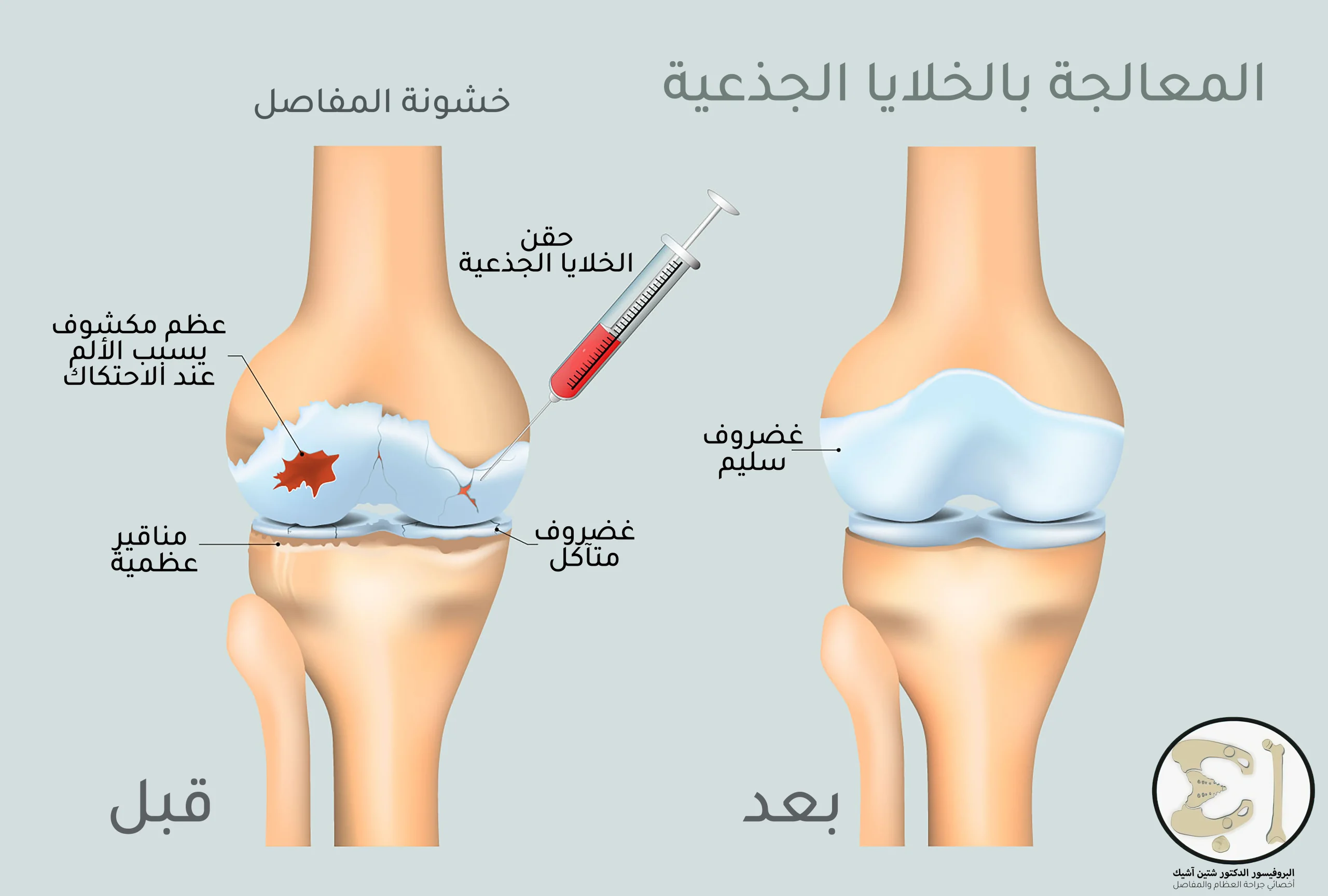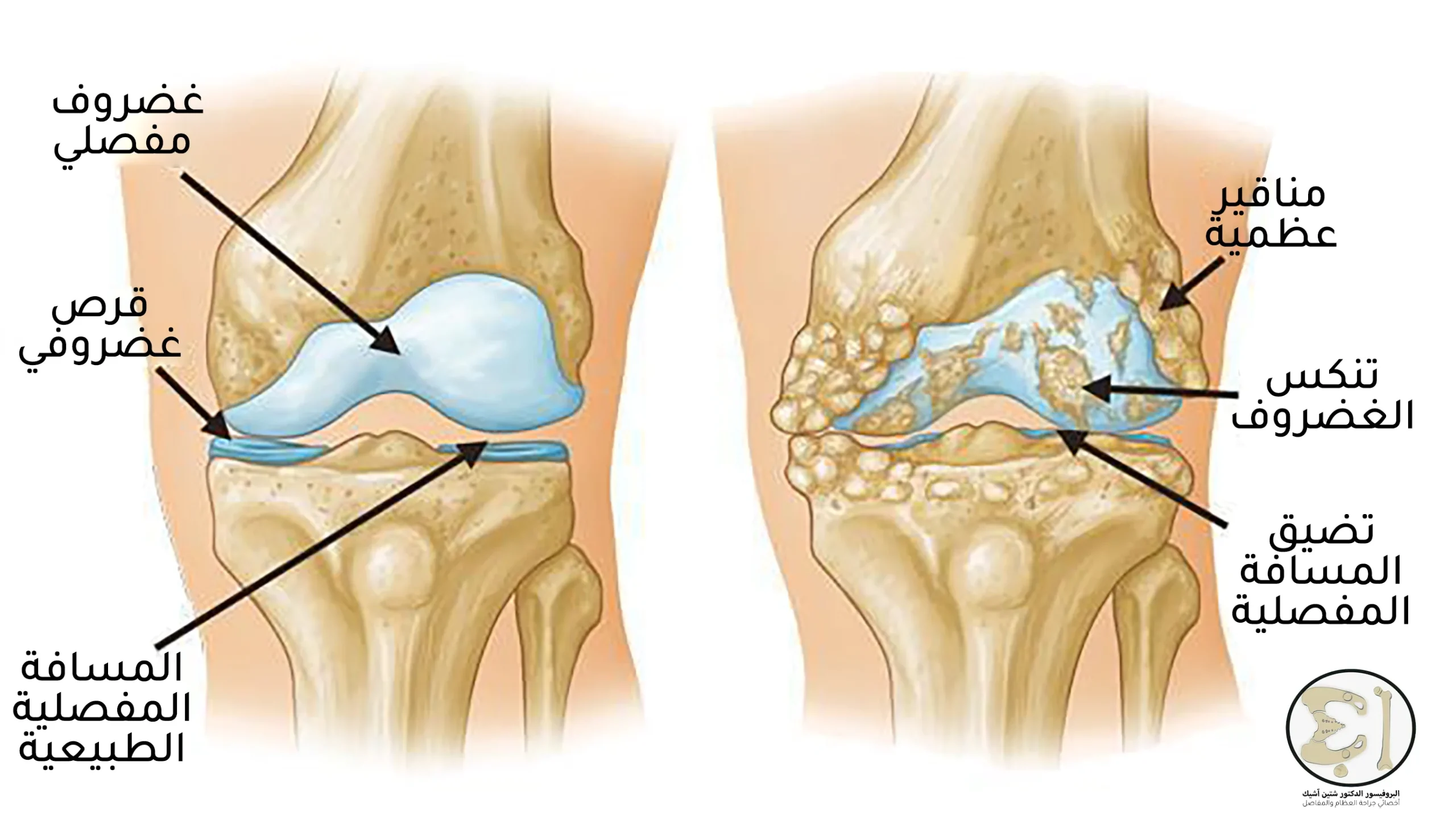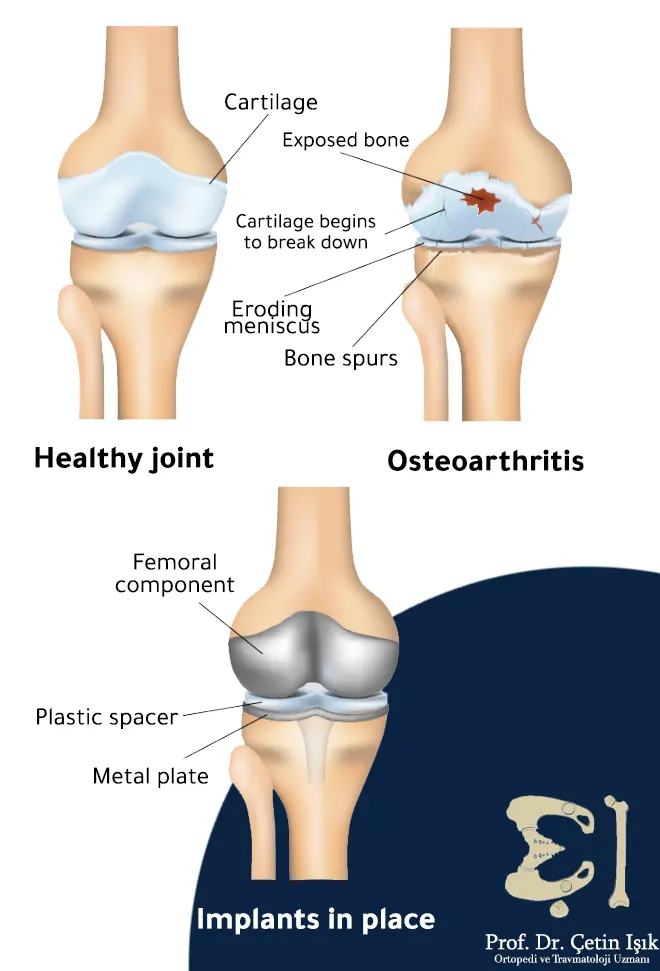مقدمة
يُعاني ملايين الأشخاص حول العالم من آلام الركبة المزمنة الناتجة عن خشونة المفصل، تمزق الغضاريف، أو التهابات المفاصل. في السنوات الأخيرة، أصبح علاج الركبة بالخلايا الجذعية (Stem Cell Therapy) أحد الحلول الحديثة والفعالة التي تُقدم بديلاً غير جراحي للعلاج التقليدي.
تُعد إسطنبول من أهم المدن التي توفر هذا النوع من العلاجات، بفضل مراكزها المتخصصة، واستخدامها لتقنيات متقدمة، وتكلفتها المعقولة مقارنة بأوروبا والخليج.
ما هو علاج الركبة بالخلايا الجذعية؟
هو إجراء طبي يُستخدم فيه الخلايا الجذعية المأخوذة من جسم المريض نفسه (عادةً من نخاع العظم أو الدهون) ويتم حقنها مباشرة داخل مفصل الركبة لتحفيز نمو الأنسجة التالفة، وتجديد الغضاريف، وتقليل الالتهاب

الحالات التي يُفيد فيها هذا العلاج
| الحالة الطبية | فعالية العلاج بالخلايا الجذعية |
|---|---|
| خشونة المفصل (الفصال العظمي) | عالية في المراحل المبكرة والمتوسطة |
| Meniscus rupture | فعالة في الحالات الجزئية |
| التهاب المفصل الروماتويدي | مفيد لتقليل الالتهاب والتورم |
| إصابة أوتار وأربطة الركبة | يساعد على الشفاء السريع |
| بعد جراحة الركبة (كعلاج مساعد) | يحسن التعافي والنسيج العظمي |
أنواع الخلايا الجذعية المستخدمة
| Source | وصف الخلايا | المميزات |
|---|---|---|
| نخاع العظم (Bone Marrow) | خلايا جذعية مستخرجة من عظم الحوض | فعالية عالية لتجديد الغضاريف |
| الدهون (Adipose Tissue) | خلايا مأخوذة من دهون البطن | سهلة الاستخلاص، آمنة وفعالة |
| البلازما الغنية بالصفيحات (PRP) | ليست خلايا جذعية لكن تُستخدم كمساعد | تزيد فعالية الخلايا وتحفيز الشفاء |

مراحل العلاج
- التقييم الأولي بالتصوير الشعاعي (أشعة – رنين مغناطيسي).
- سحب الخلايا الجذعية من نخاع العظم أو الدهون تحت تخدير موضعي.
- معالجة الخلايا في جهاز خاص لفصل الخلايا النشطة.
- حقن الخلايا الجذعية مباشرة في مفصل الركبة.
- متابعة دورية مع جلسات علاج طبيعي داعمة.
تستغرق الجلسة الكاملة عادة من 1 إلى 3 ساعات، ويُغادر المريض في نفس اليوم.
مزايا العلاج بالخلايا الجذعية في إسطنبول
| الميزة | التفاصيل |
|---|---|
| بدون جراحة أو شق جراحي | يتم عبر الإبرة فقط |
| نسبة نجاح عالية | تتراوح بين 70% – 90% في الحالات المبكرة |
| لا يحتاج إلى إقامة طويلة | يتم في عيادة أو مركز اليوم الواحد |
| تقنيات حديثة | مراكز متخصصة مجهزة بجهاز استخلاص الخلايا المتقدم |
| أطباء خبراء في الطب التجديدي | معتمدون من جهات دولية |
التكلفة في إسطنبول
| نوع العلاج | السعر التقريبي بالدولار | يشمل عادةً |
|---|---|---|
| حقن خلايا جذعية من نخاع العظم | 2,000 – 3,500 | سحب الخلايا – التحضير – الحقن – المتابعة |
| حقن خلايا جذعية من الدهون | 2,500 – 4,000 | نفس البنود + تخدير موضعي |
| دمج مع بلازما غنية بالصفيحات (PRP) | 3,000 – 4,500 | جلسات مزدوجة لتحفيز الاستجابة |
تختلف التكلفة حسب نوع المركز، خبرة الطبيب، وعدد الجلسات اللازمة.
مقارنة مع الدول الأخرى
| الدولة | متوسط التكلفة للعلاج بالخلايا الجذعية |
|---|---|
| تركيا (إسطنبول) | 2,000 – 4,000 دولار |
| الإمارات | 5,000 – 7,000 دولار |
| ألمانيا | 6,000 – 8,000 دولار |
| الولايات المتحدة | 7,000 – 10,000 دولار |
النتائج المتوقعة
- تحسن ملحوظ في الألم والحركة خلال 4 – 8 أسابيع.
- استعادة جزئية أو كلية لغضروف الركبة في بعض الحالات.
- تقليل الحاجة للمسكنات أو الحقن الكورتيزونية المتكررة.
- تجنب أو تأجيل جراحة تبديل المفصل الكلي.

Common questions
هل هذا العلاج مناسب لكل الحالات؟
لا، يُوصى به لمن هم في المراحل المبكرة إلى المتوسطة من الخشونة. الحالات المتقدمة قد تحتاج إلى جراحة.
هل العلاج بالخلايا الجذعية آمن؟
نعم، طالما يتم استخدام خلايا مأخوذة من نفس جسم المريض، وتُجرى في مركز متخصص.
هل يمكن تكرار العلاج؟
نعم، يمكن تكراره بعد 6–12 شهرًا حسب الاستجابة.
ما الفرق بين الخلايا الجذعية وحقن البلازما؟
الخلايا الجذعية تُجدد الأنسجة فعليًا، بينما البلازما تحفز عملية الشفاء.
خطوات إجراء العلاج في إسطنبول
- إرسال الأشعة والتقارير عبر البريد الإلكتروني.
- التشخيص الأولي وتحديد البروتوكول العلاجي المناسب.
- ترتيب موعد السفر والإقامة.
- إجراء العلاج في يوم واحد.
- متابعة النتائج عن بُعد أو في زيارات لاحقة.
تجارب مرضى سابقين
“كنت أعاني من خشونة متوسطة في الركبة، وبعد 6 أسابيع من حقن الخلايا الجذعية في إسطنبول، اختفى الألم بنسبة 80% واستعدت قدرتي على المشي لمسافات طويلة.”
“علاج سهل وسريع، بدون جراحة أو إقامة طويلة. الطاقم الطبي كان احترافيًا جدًا.”
Sources
Common questions
The cost varies between countries and may range from US$2,000 to US$4,000 for knees.
When compared with all other treatments for the knee and joints, stem cell transplantation or injecting into the knee is a safe technique and rarely causes problems in the near future.
At the request of the patient, after giving him sufficient information about his condition and the possibility of treating it with the new technology based on treating joints with stem cells.
Osteoarthritis and knee roughness are chronic conditions that require long periods of treatment. The improvement of symptoms depends on many factors that must be taken into account, such as age, types of treatment, and the degree of injuries in the joint.
In most cases, there is no need to stay in a hospital because stem cell injections are a quick and simple procedure.




